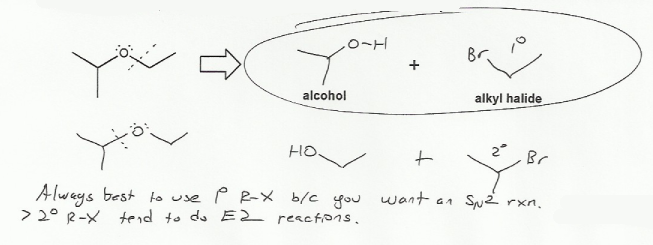The Williamson ether synthesis takes place in two steps. First an alcohol is deprotonated to form a strong nucleophile (RO-, this step isn't shown in the image below). Then the alkoxide (negative alcohol) attacks an alkyl halide in an SN2 reaction.
So this problem is really asking, which step of conditions is most favorable for an SN2 reaction?
Recall that SN2 reactions compete with E2 reactions. If the nucleophile is too basic, or if there is too much bulk, it will go E2 instead of SN2. (See problem 560 for a full explanation of these competition reactions)
Below, the top combination uses the less substituted (1º) alkyl halide, and so is the best for an SN2 reaction.
The bottom reaction uses a bulkier (2º) alkyl halide, and will probably give a higher percentage of E2 side reaction.
